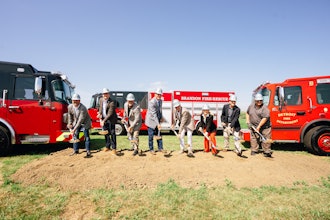
For 45 years, the Department of Labor has required employers to record the injuries and illnesses that workers suffer in their workplaces. But a new rule from the department is generating controversy because it requires employers to electronically submit some of that data to OSHA, with the intention that it will be made public.
Well, my message to the business community is this: Don’t fear transparency. Embrace it. A focus on safety − even in the glare of public scrutiny − will not only help your workers, it will also improve your bottom line.
I know, because I’ve lived it.
In October 1987, I took the helm as CEO of Alcoa, the aluminum manufacturing giant based in Pittsburgh. I surprised more than a few people when, in my opening remarks, I insisted that our primary focus going forward was to be on worker safety. Not profit margins. Not product lines. Not output. Safety for workers was number one and my goal was zero lost workdays from on-the-job injuries.
Alcoa already was a relatively safe company, sitting below the average for its industry at 1.86 lost work days per 100 workers. The safety director was very proud of that record, and even he was startled by the idea that zero was the goal. There’s always a litany of reasons why you can’t get there. But I knew we had to try, and I reinforced that idea in every meeting I had − with division presidents, workers and supervisors, and even shareholders.
After I’d been there a few months, there was an incident at an extrusion plant in Arizona. An 18-year-old worker, only three weeks on the job, jumped over a protective barrier to clear a jam on a machine. A circulating boom came around and hit him in the head, killing him instantly. He left behind a wife who was six months pregnant.
I got the whole executive crowd together, down to plant supervisor level, and we spent a day reviewing what happened. It was a grueling process, and when it was over, I got up and said, “We killed him. The supervisors were there, but we killed him. I killed him, because I didn’t go a good enough job of communicating the principal that people will never be hurt at work.”
That’s when we started seeing real change. During my 13 years at Alcoa, we saw the lost workday rate drop from 1.86 to .20. No one would have thought it possible when I started. And guess what? During that time, Alcoa’s market value jumped from $3 billion to $27.53 billion, while net income increased from $200 million to $1.484 billion.
Bottom lines and safety transparency are definitely compatible, and sustainable.
Long after I left Alcoa, the corporation continues to make safety a priority, and to brag about it to the world. A page on the corporate website documents its real time injury and illnesses rates and Alcoa’s continuing efforts to keep workers safe.
Zero work-related injuries and illnesses have been long-standing goals for Alcoa. But when zero first became the target, it seemed unreachable. “Accidents are inevitable” was often the response. They’re not. We can attain zero. It is possible, and, in many locations, it is already here thanks to dedicated effort and a firm commitment to our core values, one of which is to work safely, promote wellness, and protect the environment.
On Monday of this week, I checked the page. Alcoa’s global rate for lost days due to injury was .076. That’s pretty good for where we started, but I still wish it was zero.
Paul O’Neill is a former secretary of the treasury and former CEO of ALCOA.






















